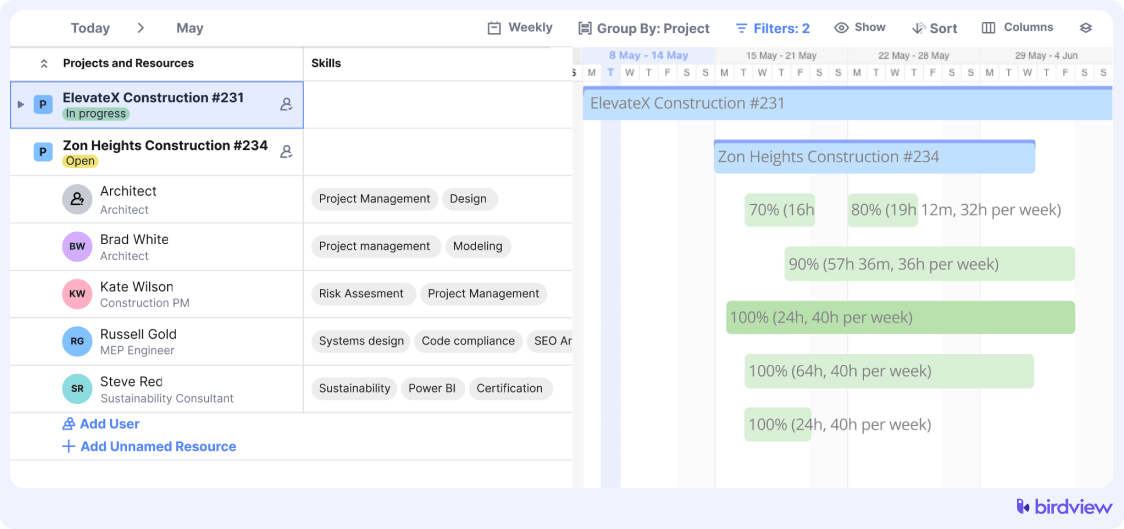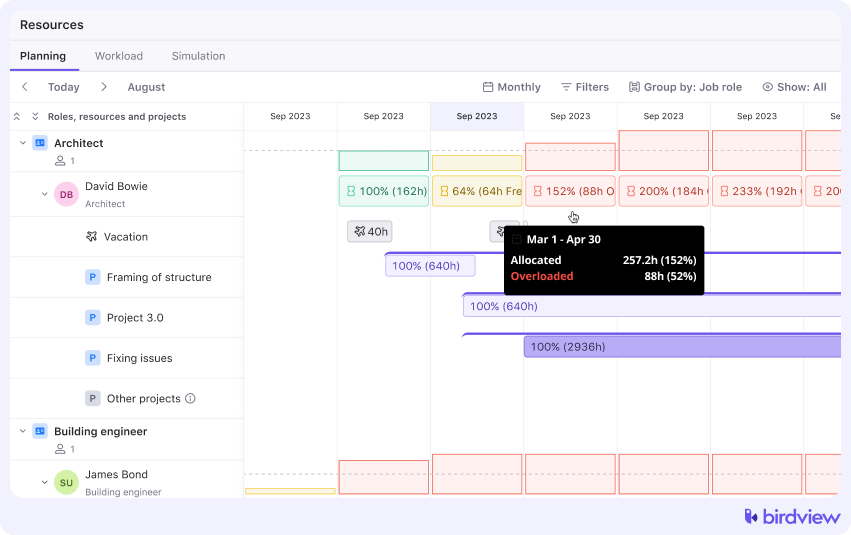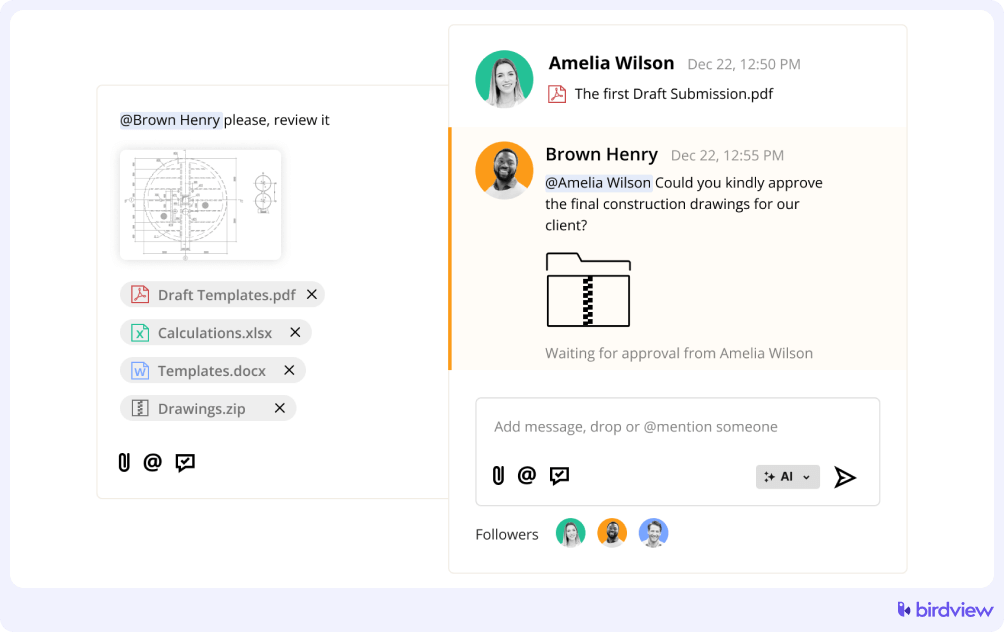Resource allocation plays a vital role in project management, enabling organizations, particularly professional services organizations, to effectively plan, manage, and utilize their resources. In the context of professional services organizations, resource allocation is critical for ensuring that the right talent is assigned to the right projects at the right time, maximizing productivity, and delivering high-quality services to clients.
However, many professional services organizations face challenges when it comes to resource allocation, which can significantly impact project success, client satisfaction, and overall productivity. In this article, we will explore five common resource allocation problems faced by professional services organizations and provide practical solutions to overcome them.
Defining resource allocation
Resource allocation in professional services organizations refers to the process of assigning and managing the available talent, skills, and expertise within the organization to specific projects, tasks, or clients. It involves determining the optimal distribution of resources to ensure that projects are adequately staffed, deadlines are met, and client expectations are fulfilled. Effective resource planning requires a thorough understanding of the organization’s resource pool and capabilities, project requirements, and client priorities.
Common resource allocation problems and solutions for Professional Services Organizations
Resource Overallocation and Underutilization
📍Problem
Resource overallocation occurs when resources are assigned more work than they can handle, leading to burnout, decreased productivity, and compromised quality. Conversely, underutilization refers to resources not being fully utilized, resulting in inefficiencies and wasted potential. It is essential to address these issues effectively.
Understanding the consequences of overallocation and underutilization is the first step. Overallocated resources experience increased stress and decreased productivity, while underutilized resources lead to wasted capacity and increased costs.
Example: consider a scenario where a project manager overestimates the capabilities of a team member by assigning them multiple high-priority tasks simultaneously. This can result in delayed project milestones and reduced work quality due to the individual‘s inability to focus adequately on each task. On the other hand, if a highly skilled team member is underutilized, their potential to contribute more meaningfully to the project is lost, leading to dissatisfaction and possible turnover.
💡 Solution
To prevent resource overallocation and address underutilization, organizations can implement the following techniques:
- Capacity planning. Evaluate resource availability and workload capacity to ensure that resources are not overcommitted. Establish realistic timelines and allocate resources accordingly to prevent overallocation.

- Resource leveling. Optimize resource allocation by redistributing tasks or adjusting schedules to balance workload across the team. Resource leveling minimizes overallocation and ensures a more even distribution of work.
- Agile methodologies. Embrace agile project management methodologies, such as Scrum or Kanban, to promote flexible resource allocation. Agile methodologies enable teams to adapt quickly to changing priorities, preventing overallocation and underutilization.
What is resource leveling?
What is capacity planning?
Agile vs waterfall methodologies
By implementing capacity planning, resource leveling, and agile methodologies, organizations can optimize resource allocation, preventing overallocation and addressing underutilization. These techniques enable organizations to allocate resources effectively based on their capacity, balance workload distribution, and adapt to changing project dynamics. As a result, organizations can achieve better resource utilization, improved project outcomes, and increased overall productivity.
To address overallocation and underutilization issues effectively, organizations can adopt resource management software, such as Birdview PSA, to:
- Adjust project timelines. Evaluate project timelines and make necessary adjustments to alleviate resource overallocation. By identifying critical tasks and reassessing deadlines, organizations can ensure a more manageable workload for resources. This proactive approach prevents resource burnout and allows for a more balanced allocation of tasks across the project timeline.
- Reassign resources. Assess the skills and availability of resources within the organization using Birdview‘s Resource Planning Center and consider reallocating them to projects or tasks that require additional support. By leveraging the expertise and capacity of resources effectively, organizations can ensure optimal resource utilization. This strategy helps address underutilization by aligning resources with projects or tasks that make the most of their skills and availability.

- Balance out the team‘s workload. Regularly monitor workload distribution and proactively make adjustments to balance resources’ workloads. This can involve redistributing tasks, delegating responsibilities, or leveraging automation tools to streamline processes and optimize resource allocation. By ensuring a more equitable distribution of work, organizations can prevent overallocation and underutilization, promoting better productivity and efficiency.
- Identify underloaded staff members. Regularly evaluate resource utilization to identify staff members who may be underloaded and have the capacity to take on additional work. By identifying underutilized resources, organizations can reallocate tasks and responsibilities to maximize their potential. This strategy prevents underutilization and ensures that resources are actively engaged, contributing to the overall success of projects.
Lack of Skills
📍 Problem
One of the major challenges in resource allocation for professional services organizations is the lack of skills or skill gaps within the talent pool. This can occur due to emerging technologies, evolving client needs, or changing market demands. When there is a shortage of specific expertise and competencies, it can lead to inefficiencies, delays, and compromised project outcomes.
There are several ways you can identify skill gaps in your team:
- Conducting skills assessments. Regularly assess the skills of your workforce through evaluations, performance reviews, and feedback mechanisms. This will help identify areas where additional training or development is needed.
- Analyzing job requirements and competencies. Align job requirements with the skills and competencies of your team members. With Birdview‘s Job Roles feature, managers can define employees‘ business roles and manage their skills and billing rates across the entire organization and specific projects.
- Gathering feedback from team members and stakeholders. Encourage open communication and feedback channels to identify potential skill gaps. Team members and stakeholders can provide valuable insights into areas where additional expertise is required.
💡 Solution
To address these skill gaps, there are several strategies that can be applied:
- Training and development programs: Invest in training programs to enhance the skills of your workforce. This can include workshops, seminars, online courses, and certifications.
- Hiring and recruitment strategies: Identify and hire individuals with the necessary skills and expertise to fill the skill gaps within your organization. Consider partnering with recruitment agencies or leveraging professional networks to attract top talent.
- Knowledge sharing and mentorship programs: Encourage knowledge sharing and mentorship within your organization. Experienced employees can mentor and guide less experienced team members, fostering skill development and knowledge transfer.
Insufficient Resource Forecasting
📍 Problem
Inadequate resource forecasting is another common challenge faced by professional services organizations. Inaccurate or incomplete forecasting can result in resource overallocation or underutilization, leading to project delays, cost overruns, and missed opportunities.
Solution
Here are only a few forecasting practices that can be applied in your organization:
- Historical data analysis. Analyze past project data to identify patterns, resource utilization trends, and potential bottlenecks. This analysis provides valuable insights for forecasting future resource requirements.
- Statistical modeling. Utilize statistical modeling techniques to forecast resource needs based on historical data, project scope, and expected changes in demand. Statistical models can help estimate resource allocation more accurately.
- Expert judgment. Seek input from subject matter experts and project stakeholders to gather insights and perspectives on resource needs. Their expertise and experience can contribute to more reliable resource forecasting.
Example: A professional services firm specializing in IT consulting might analyze data from previous projects to anticipate the need for cybersecurity experts during certain phases of a project. By applying statistical models, they can forecast the demand for these specialists and ensure they are available when needed, preventing delays and overextensions of less qualified staff.
Best practices for resource forecasting encompass several key strategies that contribute to accurate and proactive resource allocation. These practices are designed to optimize resource utilization and prevent allocation problems:
- Regular data monitoring and analysis: Continuously monitor and analyze resource utilization data to identify any deviations or discrepancies. This allows for timely adjustments and prevents resource allocation problems.
- Collaborative forecasting: Involve relevant stakeholders in the forecasting process to gain a holistic view of resource needs. Collaborative forecasting improves accuracy by incorporating diverse perspectives and insights.
- Scenario planning: Anticipate potential changes or uncertainties in project requirements and develop contingency plans accordingly. Scenario planning enables proactive resource allocation adjustments in response to evolving circumstances.
Inadequate Communication and Collaboration
📍 Problem
Effective communication and collaboration are crucial for successful resource allocation in professional services organizations. Poor communication and collaboration among team members can hinder effective resource allocation. Lack of clarity, misalignment, and information silos can lead to inefficient resource utilization and project delays. That is why implementing effective communication and collaboration strategies is crucial.
💡 Solution
Here is a list of activities that can help improve collaboration across your organization:
- Clear and concise communication
Ensure that project goals, objectives, and resource requirements are communicated clearly to all team members. Eliminate ambiguity and encourage open dialogue to prevent misunderstandings.

- Regular progress updates. Establish a communication framework that includes regular progress updates and status reports. This enables visibility into project milestones, resource allocation, and potential issues.
- Cross-functional collaboration. Foster collaboration among different teams and departments involved in resource allocation. Encourage cross-functional meetings, brainstorming sessions, and shared decision-making to enhance resource coordination.
Example: A practical example of fostering cross-functional collaboration can be seen in marketing and sales teams working together on a new client acquisition project. Regular joint meetings ensure that the resources from both teams are aligned, avoiding duplication of effort and ensuring that all necessary skills are utilized effectively. This alignment not only improves resource allocation but also accelerates the achievement of project goals.
➡️ learn more: 8 Benefits of Cross-Functional Teams
Enhancing collaboration within teams is essential for effective resource allocation. By fostering a collaborative environment, organizations can harness the collective expertise and creativity of their team members. Here are three strategies to enhance collaboration within teams:
- Project management tools: Utilize project management software or collaboration platforms such as Birdview PSA that facilitate real-time communication, task tracking, and resource allocation visibility. These tools promote transparency and streamline collaboration.
- Team-building exercises: Organize team-building activities to foster better communication and rapport among team members. Activities such as workshops, team retreats, or problem-solving exercises can improve trust and collaboration.
- Knowledge-sharing platforms: Implement knowledge-sharing platforms or intranets to enable the exchange of information, best practices, and lessons learned. Such platforms facilitate continuous learning and collaboration among team members.
Ineffective Workload Balancing Strategies
📍 Problem
Inadequate workload balancing strategies can lead to resource allocation problems in professional services organizations. Failure to effectively balance workloads can result in overburdened resources, decreased productivity, and increased stress.
💡 Solution
To address this challenge, professional services organizations can:
- Regularly monitor workload distribution. Continuously monitor and analyze resource utilization data to identify any deviations or discrepancies. This allows for timely adjustments and prevents resource allocation problems.
- Foster collaboration and knowledge sharing. Promote collaboration within teams through project management tools, team-building exercises, and knowledge-sharing platforms. These facilitate real-time communication, improve trust and collaboration, and enhance resource coordination.
Strategies for optimizing resource utilization and addressing underutilization play a crucial role in maximizing the productivity and effectiveness of a team. By implementing these strategies, organizations can ensure that resources are utilized efficiently and effectively. Let’s explore some key strategies:
- Cross-training and skill development: Identify opportunities to cross-train team members and expand their skill sets. This allows for more flexibility in resource allocation and ensures that resources can be utilized in various capacities.
- Resource reallocation: Assess the strengths and interests of individual team members and reallocate resources to align with their skills and expertise. This improves resource utilization and job satisfaction.
- Redefining roles and responsibilities: Regularly review and redefine roles and responsibilities to align with changing project needs. As a result, it helps to clarify expectations and ensure that resources are assigned tasks that match their capabilities.
- Monitoring and adjusting resource allocation to maintain optimal utilization: Continuously monitor resource utilization and gather feedback from team members to identify potential issues. Regularly review and adjust resource allocation to maintain optimal utilization and prevent overallocation or underutilization.
Conclusion
Effective resource allocation is vital for the success of professional services organizations. By identifying and addressing common resource allocation problems, such as lack of skills, insufficient forecasting, communication issues, resource overallocation, and underutilization, organizations can enhance productivity, minimize delays, and achieve better project outcomes. The solutions provided in this article offer practical strategies for professional services organizations to optimize their resource allocation practices. By implementing these strategies and fostering a culture of continuous improvement, professional services organizations can ensure optimal resource utilization, improved client satisfaction, and increased overall productivity.



